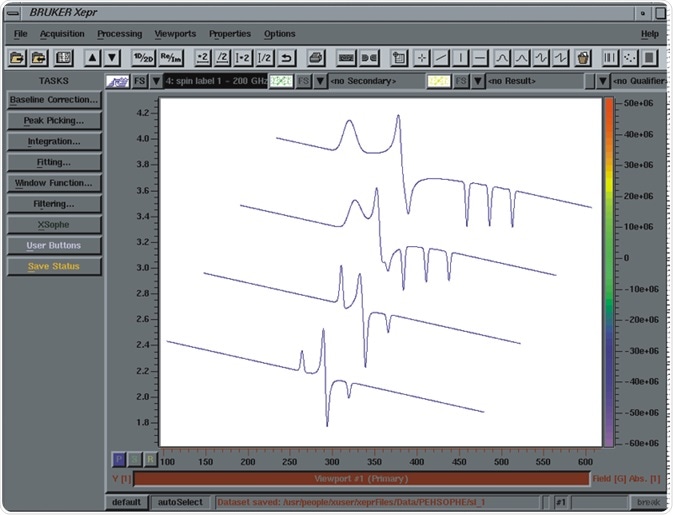

In this mode you can view any plane and rotate along the "X", "Y" or "Z" axes.Ĭonverting 2D and 3D Spectra Directly to Sparky Format

To manipulate (i.e., rotate) the cube click the cube icon. Processing the 3D involves three successive commands: "tf3", "tf2", and "tf1", to transformed the acquisition dimension (F3) and the two indirect dimensions (F2 and F1). To return back to the first processed data number type "rep 1". Phase as above and store in the 3D spectrum. To select them type the "xfb" and a pop-window will appear to select the plane type "23" or "13" and a new processed data number for the 2D plane. Next process and phase the F2F3 and F1F3 2-dimensional planes. The library of commands is available in the Processing booklet accompanying the system.īegin by setting the number of points in the processing parameters to low values to reduce the size of the processed data (i.e., 512圆4圆4). Processing 3D spectra in Topspin is relatively straightforward. The user stores the phase corrections and reprocesses using "xfb".Īutomatic basline correction in each dimension is accomplished using the "abs1" and "abs2" commands.Īgain, Topspin has a nice feature for overlaying 2D spectra which is analogous to the description above for 1D spectral overlaying. For 2D spectra rows or columns for phasing are chosen using the mouse and phasing is accomplished as above for each dimension. Check processing parameters (under the processing tab or using "edp") and adjust number of points and apodization functions in each dimension.Īgain phasing is accomplished using the phase correction sub-routine. Various features of either spectrum (i.e., vertical position, data height, spectral width) can be changed using the icons in this mode.Ģ-Dimensional data sets are processed at any time during the experiment using the command "xfb". Then drag the desired experiment into the spectral window. Simply click the overlay icon and enter the spectral overlay mode. Topspin also has a nice feature for overlaying 1D spectra. Zero and first order phase correction is applied by dragging the left mouse button over the "0" and "1" icons.īaseline correction of 1D-spectra is done in an interactive fashion using the "bas" command and the "A", "B", "C", "D", and "E" icons. In TopSpin, the phase correction sub-routine is initiated by the clicking the phase correction icon. To process a 1D experiment on the fly the user can transfer the current FID using the command "tr", then process as above.
Bruker epr data processing software#
The user is also refered to the extensive documention that accompany the software (under "Help").ġ-Dimensional data sets are processed at the conclusion of the experiment using the command "fp" (Fourier transform and apply phase corrections) or "efp" (also apply exponential multiplication). Here we describe some processing basics on Bruker spectrometers equipped with Topspin 2.0 and higher software. Processing of spectra at the console is routinely required during data collection.

5 Converting 2D and 3D Spectra Directly to Sparky Format.3.1 Figure 2: A 2D 15N, 1H-HSQC spectrum.


 0 kommentar(er)
0 kommentar(er)
